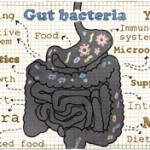
Elena Elisseeva/shutterstock.com
SAN FRANCISCO—The organisms in the gut are remarkably malleable with diet, dangling the possibility that diseases could potentially be affected by the food that people eat, according to an expert here at the 2015 ACR/ARHP Annual Meeting.
Diet
Starting with studies of animal feces from zoos and from the wild, in which researchers found that the driving force behind their microbiome was their diet, investigators have now zoomed in to find the types of organisms that flourish in which kinds of diets, and how those communities of organisms change when the diet changes, said Peter Turnbaugh, PhD, assistant professor of microbiology and immunology at the University of California San Francisco.
His lab found, in human studies, that the changes are particularly dramatic during the consumption of an animal-based diet relative to a plant-based diet, with bacteria tolerant to bile acids becoming elevated.1

Dr. Turnbaugh
“This, we thought, was very intriguing,” Dr. Turnbaugh said. “It’s well known that if you eat a very high-fat diet, it causes your body to release more bile acids into the gut. And that can have an antimicrobial effect against many different bacteria.”
At the same time, bacteria good at degrading plant polysaccharides became less abundant.
“And so one hypothesis might be that we’ve taken away the fiber from the diet, and now these groups are starving,” he said.
There are reasons to think that these changes can have real effects on disease. A paper in 2012 showed that in mice with a diet high in certain types of saturated fat, there is an increase in the release of bile acids, with an accompanying increase in bacteria including Bilophila wadsworthia.2 And in the right genetic context, this microbe can drive inflammatory bowel disease.
In his experiments, the group that was most elevated on the animal-based diet included Bilophila wadsworthia.
“This is sort of a complicated, but interesting, way to think about this interaction between diet, the microbiome and disease,” Dr. Turnbaugh said.
Researchers then studied whether the genetic makeup of mice influenced diet’s effects on the gut’s organisms by studying mice—called Diversity Outbred Mice—that are very different genetically from one another.
All of the mice were started on a low-fat diet that was high in fiber and plant polysaccharides. When they were seven weeks old, they were put on a one-week challenge of high-fat, high-sugar diet, or the Western diet. After a week, they were put back on the low-fat diet, then were shifted to the high-fat diet for two months.


